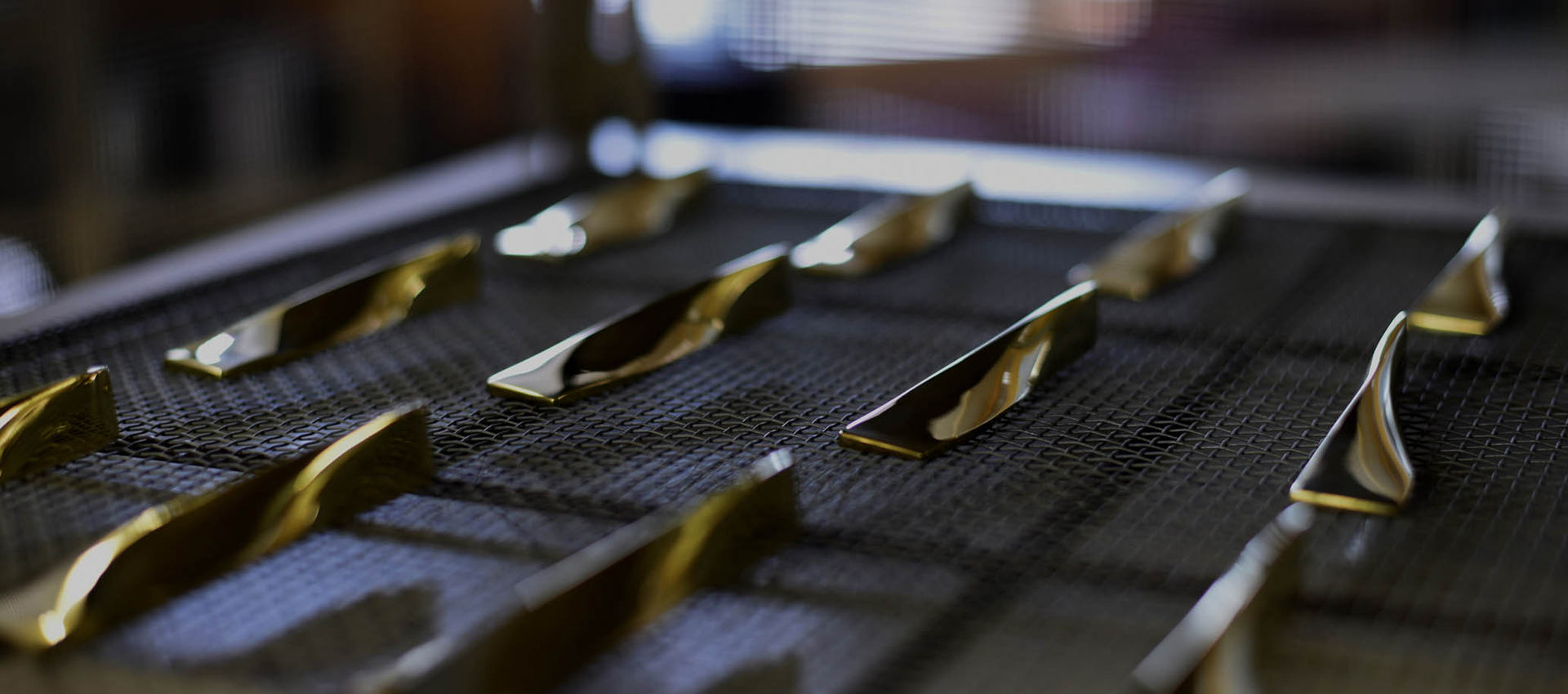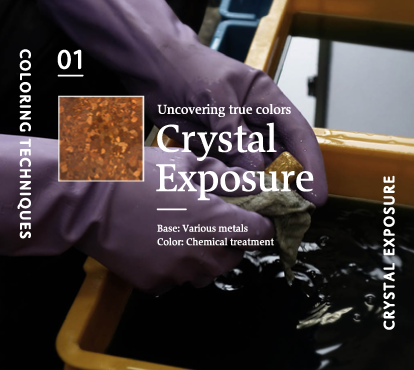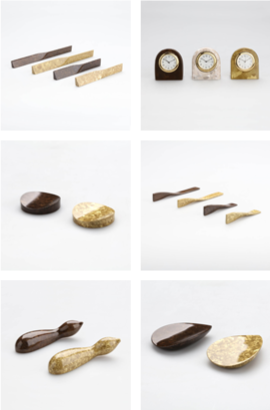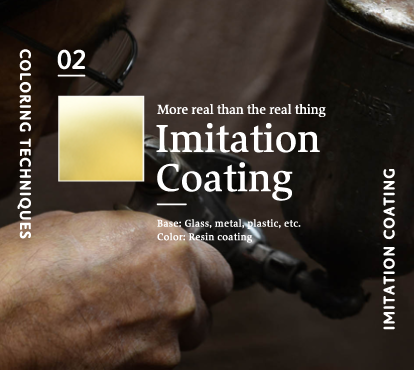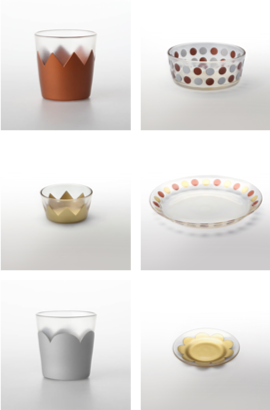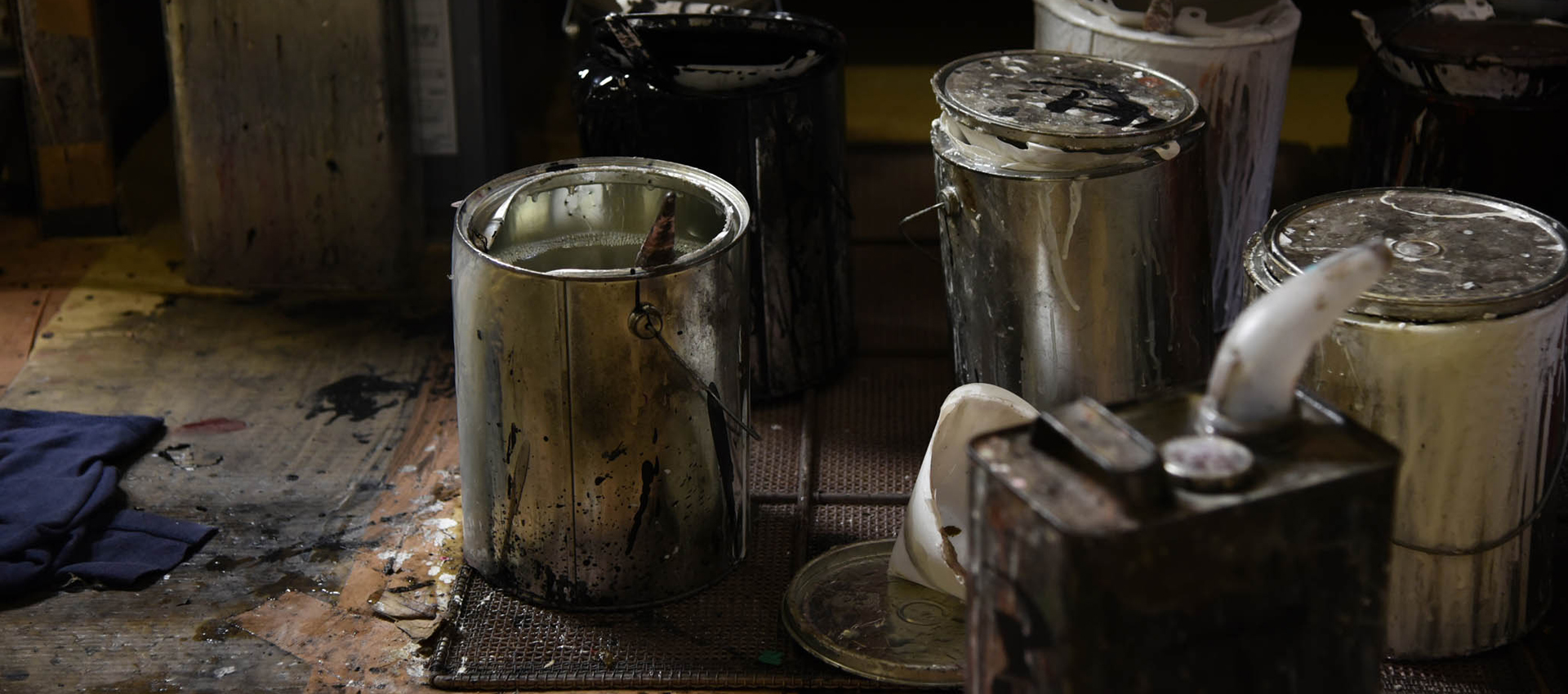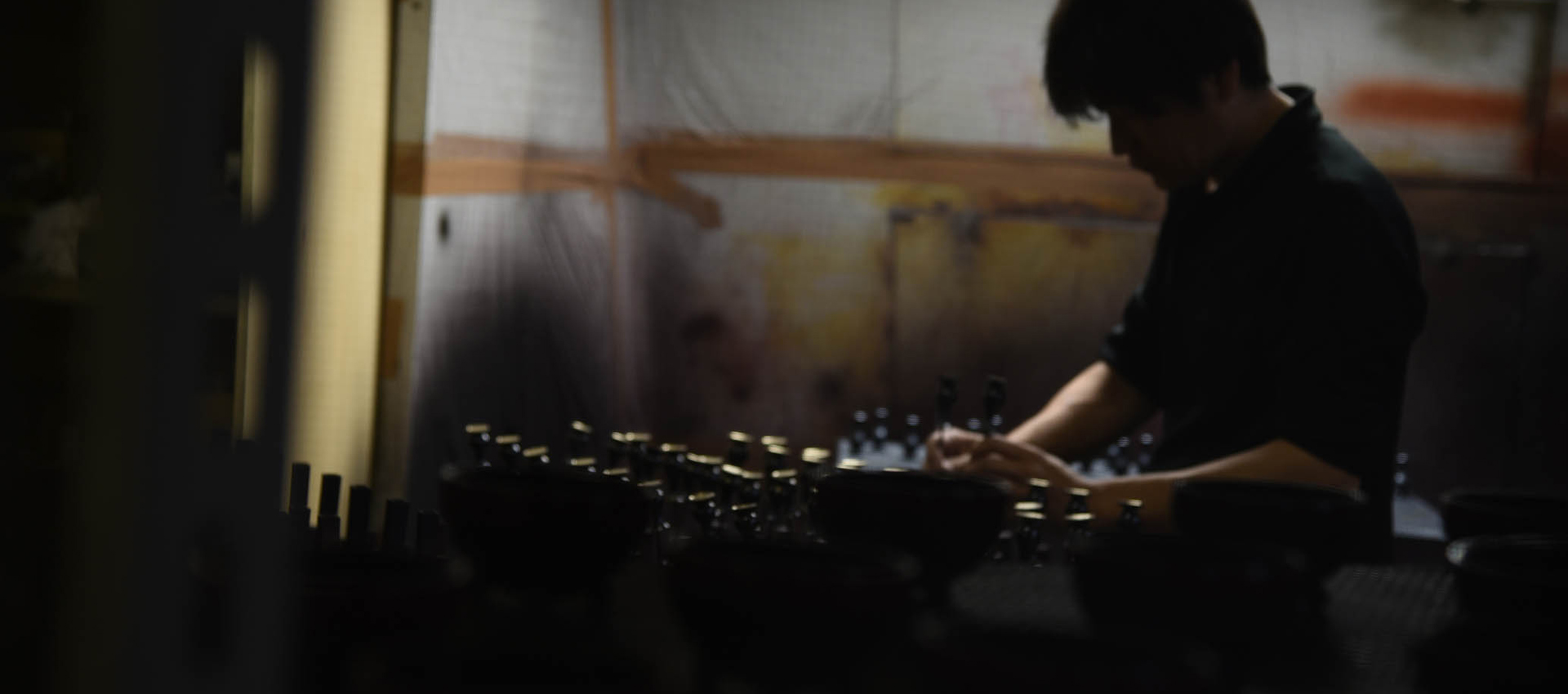"Coloring" means bringing out the original colors of the metal by oxidizing/carbonizing its surface, with various chemicals and organic substances, using traditional techniques employed over time in the Takaoka Copperware manufacturing process.
"Coating" means applying color artificially by spraying the product with paint, made from a mixture of pigment, resin, and solvent. At Sugimoto Bisou, we furnish products with outstanding weatherability and chemical resistance, by spraying them with acrylic resin before baking.
After starting our journey as a finishing shop for Takaoka Copperware, a 400-year-old traditional craft, we have continued to pioneer various "coloring" and "coating" techniques, while exploring possibilities for a wide range of expressive styles—incorporating acrylic coating in the traditional Takaoka Copperware industry early on and creating "crystal exposure," a technique in which the crystalline patterns in metal are chemically exposed.


